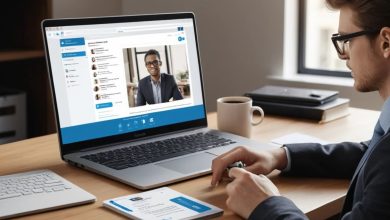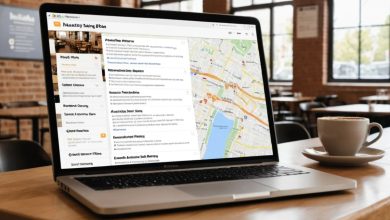Top Networking Skills Every Graduate Should Master
Entering the professional world as a recent graduate can feel like navigating uncharted territory. While technical skills and academic achievements are essential, mastering networking skills often makes the difference between waiting for opportunities and proactively creating them. In this article, you will learn which interpersonal, digital, and strategic networking skills every graduate should develop, along with practical examples and step-by-step guidance to build authentic relationships that accelerate career growth.
Understanding the Importance of Networking Skills for Graduates
What Are Networking Skills?
Networking skills are the abilities that enable you to create, maintain, and leverage professional relationships effectively. These competencies include:
-
Active listening and empathy to truly understand others’ needs and perspectives
-
Clear verbal communication that conveys ideas succinctly
-
Positive nonverbal cues, such as confident posture and eye contact
-
Digital proficiency for engaging on platforms like LinkedIn or professional forums
-
Consistent follow-up to turn initial interactions into lasting connections
Why Graduates Need Strong Networking Skills
Strong networking skills open doors that may otherwise remain closed. Through meaningful connections, graduates can access job opportunities before they are advertised, gain mentorship from seasoned professionals, and stay informed about industry trends. For example, Sarah, a marketing graduate, secured her first role by reaching out to an alumnus who later recommended her to a hiring manager. Without that connection, she might have spent months applying cold to countless positions.
Identifying Your Networking Goals as a Graduate
Setting clear goals ensures your networking efforts remain focused and measurable. Follow this checklist to establish SMART objectives:
-
Define Short-Term Goals: Decide if you want to schedule three informational interviews within the next month or gain ten new LinkedIn connections in your target industry.
-
Outline Long-Term Goals: Consider finding a mentor within six months or joining a professional association by year’s end.
-
Establish a Timeline: Assign deadlines for each milestone, such as “Complete two informational interviews by August 15.”
-
Plan Action Steps: Determine how you will reach out—via email, university alumni events, or virtual meetups—and track progress weekly.
By clarifying what you want to achieve, you transform vague networking aspirations into a roadmap that guides each interaction.
Core Interpersonal Skills for Effective Networking
Active Listening and Empathy
Active listening involves giving undivided attention, summarizing what you’ve heard, and asking probing questions. Empathy means genuinely caring about the other person’s feelings and experiences.
-
Observe body language: nod, maintain eye contact, and lean slightly forward.
-
Paraphrase statements: “So what I’m hearing is…,” then ask, “Can you tell me more about that?”
-
Validate feelings: “That must have been challenging—how did you handle it?”
Tutorial: Practice this in every conversation by following these three steps:
-
Focus Fully: Silence notifications, maintain eye contact, and give the speaker your undivided attention.
-
Reflect Back: After they speak, summarize their point in your own words before responding.
-
Ask Open-Ended Questions: Encourage deeper insights with prompts like, “What inspired you to choose that career path?”
Example Dialogue:
-
Speaker: “I struggled with finding an internship last semester.”
-
Listener: “It sounds like it was frustrating not having leads right away. What approaches did you try to reach out to companies?”
-
Speaker: “I sent generic emails but didn’t get responses.”
-
Listener: “Let’s brainstorm ways to personalize your outreach—would you be open to using mutual connections to introduce you?”
Effective Verbal Communication
Clear verbal communication conveys your ideas effectively and builds credibility. Best practices include:
-
Speaking concisely without jargon
-
Using a confident tone and moderate pace
-
Incorporating open-ended questions to invite dialogue
Tutorial: Craft a 30-second elevator pitch by following these steps:
-
State Your Role or Background: “I’m a recent computer science graduate specializing in web development.”
-
Highlight a Key Achievement: “During my internship at TechSoft, I developed a responsive web app that improved user retention by 15%.”
-
Express Your Objective: “I’m eager to connect with professionals in front-end roles to understand best practices in building scalable interfaces.”
-
Invite Further Conversation: “Could you share what technologies you find most valuable in your projects?”
Practicing this pitch ensures you present a confident, concise introduction at events or during cold outreach.
Nonverbal Communication and Body Language
Nonverbal signals often speak louder than words. Key cues include:
-
Making steady eye contact to show engagement
-
Maintaining open posture—uncrossed arms and straight back
-
Offering a firm handshake or a friendly nod during virtual greetings
-
Smiling sincerely to convey warmth
Tutorial: For virtual events, position your camera slightly above eye level, ensure bright but soft lighting, and sit against a neutral background. In person, stand tall, lean in slightly when listening, and match the other person’s energy level.
Comparison of Virtual vs. In-Person Nonverbal Considerations:
-
Virtual: Focus on facial expressions and vocal tone since full-body cues may not be visible.
-
In-Person: Use gestures, posture, and spatial awareness—avoid excessive fidgeting or looking at your phone.
Digital Networking Proficiencies for Graduates
Optimizing Your LinkedIn Profile
A polished LinkedIn profile acts as a 24/7 digital business card. Include these must-have sections:
-
Professional Photo: High-resolution headshot with a neutral background.
-
Headline with Keywords: “Marketing Graduate | Social Media Strategy | Content Creator.”
-
Summary: Highlight your academic highlights, key projects, and career goals.
-
Experience: List internships, volunteer roles, and any leadership positions, each with bullet points on achievements.
-
Skills & Endorsements: Include “Networking skills for graduates,” “Digital marketing,” “Data analysis,” and request endorsements from peers or mentors.
Tutorial: Use relevant hashtags and keywords in your summary and posts—examples: “#NetworkingSkills,” “#EntryLevelFinance,” or “#SoftwareEngineeringGraduate” to improve discoverability by recruiters and peers.
Example LinkedIn Headline:
“Business Administration Graduate | Expertise in Financial Modeling & Networking Skills for Graduates”
Engaging in Professional Online Communities
Participating in online forums and groups expands your reach. Compare common platforms:
| Platform Type | Pros | Cons | Use Case |
|---|---|---|---|
| LinkedIn Groups | Large audience, industry-specific topics | High noise, occasional spam | Sharing articles, asking targeted questions |
| University Alumni Forums | Shared background, high trust | Limited to alumni only | Finding entry-level job referrals, mentorship |
| Niche Slack/Discord Channels | Real-time chat, close-knit community | Invite-only, can require steep onboarding | Peer support, collaborative projects, informal Q&A |
Tutorial: To write engaging posts and comments:
-
Start with a Hook: “As a new grad entering digital marketing, I’ve noticed…”
-
Provide Value: Share an insight or resource: “Here’s a free tool I used for keyword research…”
-
End with a Call-to-Action: “Has anyone else tried this approach? I’d love to hear your feedback.”
Dos and Don’ts for Online Etiquette:
-
Do personalize connection requests by mentioning why you wish to connect.
-
Do offer your perspective or answer questions when you have expertise.
-
Don’t spam group members with self-promotional links.
-
Don’t post off-topic content or overly generic comments like “Great post!” without adding substance.
Email Outreach and Follow-Up Strategies
Email remains a powerful tool for direct outreach. Follow these steps:
-
Craft a Personalized Subject Line:
-
Example: “Hello Jane, Fellow Engineering Grad Seeking Advice at TechCorp”
-
-
Structure the Body:
-
Brief Introduction: “I’m Alex, a recent mechanical engineering graduate from State University.”
-
Reason for Reaching Out: “I saw your post about 3D printing innovations and was inspired by your work.”
-
Specific Request: “Could we schedule a 15-minute call to discuss your experience transitioning from college projects to industry roles?”
-
Polite Close: “Thank you for considering my request. I appreciate any guidance you can offer.”
-
-
Send a Gentle Follow-Up: If no response after one week, send: “Hi Jane, just following up on my previous email in case it got buried—happy to connect at your convenience.”
Example Email Template for Informational Interview:
Subject: Seeking Your Insights on Product Design Careers
Hi [Name],
I hope you’re well. I’m Maria, a recent industrial design graduate at State Tech. Your career journey caught my attention when I read your article on ergonomic furniture design. I would greatly appreciate 15 minutes of your time to learn how you transitioned from campus projects to leading design teams.
Thank you for considering my request—any advice would be invaluable.
Best regards,
Maria Perez
LinkedIn: linkedin.com/in/mariaperez
Networking at Events and Meetups
Preparing for College Career Fairs and Industry Events
Thorough preparation ensures you make a strong impression. Use this pre-event checklist:
-
Research Participating Companies: Identify roles you’re interested in and note hiring managers’ names if available.
-
Prepare Tailored Resumes: Customize your resume summary to align with the employers you’ll meet.
-
Rehearse Your Elevator Pitch: Practice your 30-second introduction until it feels natural.
-
Gather Materials: Print high-quality resumes, business cards, or have a digital portfolio link ready on your phone.
Tutorial: Prioritize booths or sessions by matching them to your career goals. Create a daily schedule for a two-day virtual career fair:
-
Day 1
-
9:00–10:00 AM: Keynote on Emerging Tech Trends
-
10:15–12:00 PM: Booth Visits—Top 3 Companies on Your List
-
1:00–3:00 PM: Breakout Sessions—Resume Review Workshop
-
3:15–5:00 PM: Speed Networking with Hiring Managers
-
-
Day 2
-
9:00–10:00 AM: Panel Discussion on Remote Work Strategies
-
10:15–12:00 PM: Booth Visits—Next 3 Companies
-
1:00–3:00 PM: Career Coaching Sessions
-
3:15–5:00 PM: Virtual Happy Hour with Alumni Mentors
-
By following this structure, you ensure you cover essential sessions while leaving room for spontaneous networking opportunities.
Mastering Small Talk and Conversation Starters
Small talk builds rapport and sets the stage for more in-depth discussion. Use these icebreakers:
-
“What inspired you to attend this event today?”
-
“Which speaker or session has been most valuable so far?”
-
“I noticed you work at TechNova—what excites you about your current project?”
Tutorial: Transition from small talk to professional conversation:
-
Acknowledge Common Ground: “I see we both studied at State University—how did you find the campus career services?”
-
Ask Insightful Questions: “Given your role in supply chain analytics, what skills are most in-demand right now?”
-
Share Your Story Briefly: “I recently completed an internship where I helped optimize inventory management—could I tell you more about that?”
Example Scripts:
-
Entering: “Hi, I’m David Wang, a recent finance graduate. I noticed you specialize in fintech solutions—how did you break into that niche?”
-
Exiting: “It was great speaking with you about data security. May I connect with you on LinkedIn and follow up next week about the whitepaper you mentioned?”
Following Up After In-Person and Virtual Events
Timely follow-up is crucial to cementing new connections. Follow this checklist:
-
Send Personalized LinkedIn Invites within 24–48 hours:
-
Reference a specific detail: “I enjoyed our discussion about sustainable packaging solutions at the GreenTech Summit.”
-
-
Offer Value: Share a relevant article, resource, or introduction to another connection: “I came across this report on biodegradable materials that you might find useful.”
-
Log Details in a Tracking System to stay organized:
-
Columns: Name | Event | Date Met | Discussion Point | Next Action
-
By systematically following up and tracking interactions, you demonstrate professionalism and keep relationships from fading.
Building and Maintaining Long-Term Professional Relationships
Developing a Consistent Check-In Routine
Maintaining connections requires intentional, regular touchpoints. Use this tutorial:
-
Set Calendar Reminders: Schedule quarterly reminders for each key contact.
-
Draft Check-In Messages:
-
“Hi [Name], hope you’re well. I recently read an article on AI-driven marketing strategies and thought you might find it interesting.”
-
“Hello [Name], I recall you mentioned an upcoming product launch—how did it go?”
-
-
Update a Tracking Sheet:
-
Columns: Name | Role | Company | Last Interaction Date | Next Check-In Date
-
Example Tracking Sheet Entry:
-
Name: Emma Thompson
-
Role: Junior Data Analyst
-
Company: Insight Analytics
-
Last Interaction: June 12, 2025 (Virtual Roundtable)
-
Next Check-In: September 12, 2025
Offering Value Before Asking for Favors
Demonstrating value-first behavior fosters trust. Consider these approaches:
-
Share Industry Articles: Send relevant links with a brief note: “I thought of you when I read this piece on cloud computing trends.”
-
Provide Feedback: If a connection is seeking advice, offer constructive feedback free of charge.
-
Volunteer Assistance: Offer to help organize an event or review materials in exchange for guidance.
Example of a Value-First Message:
Hi [Name],
I noticed you’re exploring ways to implement machine learning in customer support. I recently found a free online tutorial that walks through building a chatbot—thought you might find it helpful. If you ever need someone to review your initial model, I’d be happy to help.
Leveraging Mentorship and Peer Networks
Mentors and peer groups provide guidance and mutual support.
Finding a Mentor
-
Potential Sources:
-
Professors who taught your capstone project
-
Alumni working in your target industry
-
Internship supervisors who witnessed your strengths firsthand
-
-
Tutorial for Requesting Mentorship:
-
Outline Your Goals: “I aim to transition into product management within two years.”
-
Express Admiration: “I admire how you scaled your startup to 50 employees in under a year.”
-
Propose a Meeting Cadence: “Would you be open to a one-hour call once a month to discuss industry trends and career advice?”
-
Engaging Peer Accountability Groups
-
Benefits:
-
Shared learning and mutual encouragement
-
Collective goal-setting and resource sharing
-
Honest feedback from peers facing similar challenges
-
-
Example: A group of five business graduates meets monthly to exchange job leads, review resumes, and hold each other accountable for sending out a set number of outreach emails.
Advanced Networking Techniques for Career Growth
Collaborating on Projects and Co-Authoring Content
Collaborative efforts showcase expertise and expand your visibility:
-
Types of Collaboration:
-
Guest blogging on each other’s platforms
-
Joint research projects or case studies
-
Participating in hackathons or design sprints together
-
-
Tutorial for Pitching a Co-Authored Blog Post:
-
Identify a Relevant Topic: Research trending issues (e.g., “Remote Internship Best Practices”).
-
Propose an Outline: Assign sections—one author covers industry background, the other writes case studies.
-
Set Deadlines: Agree on a timeline for drafts, revisions, and publication.
-
-
Example: Two tech graduates co-authoring a case study on using open-source tools to build a mobile app, with one focusing on front-end design and the other on back-end integration.
Speaking Opportunities and Panel Participation
Presenting at events positions you as an emerging expert:
-
Potential Venues:
-
University-hosted webinars or alumni panels
-
Local industry meetups or startup pitch nights
-
Student-run conferences or professional association workshops
-
-
Tutorial for Crafting a Speaker Proposal:
-
Title: Create a compelling, specific title like “Networking Strategies for Entry-Level Data Analysts.”
-
Abstract: Summarize key takeaways in 100–150 words—what will attendees learn?
-
Learning Outcomes: List three actionable insights (e.g., “How to craft a data-driven resume,” “Effective strategies for virtual meetups,” “Leveraging alumni networks for referrals”).
-
-
Example Outline for a 15-Minute Presentation:
-
Introduction (2 minutes): Brief background and purpose
-
Main Content (10 minutes): Three core networking skills—active listening, LinkedIn optimization, follow-up routines
-
Q&A (3 minutes): Address audience questions and invite connections afterward
-
Using Data to Track Networking ROI
Measuring your networking efforts helps you focus on the most productive activities:
-
Tutorial for Building a Networking Dashboard:
-
Create Columns: Contact Name | Role | Company | Interaction Date | Outcome (e.g., job referral, mentorship) | Next Step | Next Step Date
-
Log Each Interaction: After every meeting, record the discussion highlights and any promised follow-up.
-
Review Monthly: Identify which channels (career fairs, LinkedIn outreach, alumni events) yield the highest response rates.
-
-
Key Metrics to Monitor:
-
Number of new qualified connections made per month
-
Percentage of follow-up emails that receive a response within two weeks
-
Number of informational interviews scheduled
-
Referrals or job leads received from networking activities
-
Example Quarterly Review Process:
-
January–March: 50 new LinkedIn connections, 10 informational interviews, 2 direct referrals
-
April–June: 30 event-based connections, 8 follow-up meetings, 3 referrals
-
Action: Invest more time in alumni events that produced higher-quality referrals.
Overcoming Common Networking Challenges for Graduates
Networking as an Introvert
Introverts can excel at networking by leveraging thoughtful, one-on-one interactions:
-
Introvert-Friendly Strategies:
-
Start with online communities where you can craft responses at your own pace
-
Schedule one-on-one informational interviews instead of attending large mixers
-
Prepare questions and talking points in advance to reduce anxiety
-
Tutorial for Preparing Mentally:
-
Deep Breathing Exercises: Practice before joining a virtual event to calm nerves.
-
Rehearse Icebreakers: Have three prepared questions ready to initiate conversations.
-
Set Realistic Goals: Aim to connect with two people per event instead of trying to meet everyone.
Example: Lina, an introverted biology graduate, began by joining a small online forum for biotech professionals. She contributed thoughtful comments before attending a virtual panel, which made it easier to follow up with attendees one-on-one.
Handling Rejection and Ghosting Gracefully
Not every outreach will result in a response. Maintain a positive mindset and clear strategy:
-
Acknowledge That Silence Is Not Personal: Busy schedules often lead to missed messages.
-
Follow Up Once Politely: Send a reminder with fresh value: “I found an article that might help with your project.”
-
Move On If No Response: After one follow-up, shift focus to other potential contacts to avoid dwelling on unanswered messages.
Tutorial for Crafting a Polite Follow-Up:
-
Greeting and Reminder: “Hi [Name], hope you’re doing well. I wanted to follow up on my previous message in case it got buried.”
-
Value Addition: “I thought you might find this resource on sustainable packaging trends interesting.”
-
Polite Close: “If now isn’t a good time, I understand, but I appreciate any guidance you can offer.”
Example Follow-Up Message:
Hi Mark,
Just checking in on my email from last week regarding potential guidance on UX design careers. I came across a detailed guide on portfolio best practices that you or someone you know might find useful. If you have a moment, I would still appreciate a brief chat.
Thanks for your time,
Jenna
Networking on a Tight Budget
Effective networking does not require a large budget. Consider these cost-effective options:
-
University Alumni Directories: Many graduates offer free mentorship or job referrals through alumni networks.
-
Free Public Webinars: Look for industry associations offering no-cost online events with Q&A segments.
-
Local Meetup Groups: Use platforms like Meetup.com to find free or low-cost in-person gatherings.
-
Host Virtual Coffee Chats: Set up one-on-one conversations using free platforms (Zoom Basic or Google Meet).
Tutorial for Hosting a Virtual Coffee Chat:
-
Select a Platform: Use Zoom’s free plan, which allows 40-minute sessions, or Google Meet with no time limit for individual chats.
-
Send a Brief Invite: “Hi [Name], would you be open to a 20-minute virtual coffee chat next week? I’d love to learn about your career journey in data science.”
-
Prepare an Agenda: Outline two key topics you want to discuss, such as portfolio tips or job search strategies.
Example: Jorge, a civil engineering graduate, organized a weekly virtual study group via Discord. Each week, five graduates discussed industry news, shared resume feedback, and invited guest speakers—all at zero cost.
Frequently Asked Questions (FAQs)
What Are the Top Networking Skills Every Graduate Should Master?
-
Active listening and empathy to build genuine rapport
-
Clear verbal and nonverbal communication to convey confidence
-
Effective digital networking, including a polished LinkedIn profile and targeted outreach
-
Consistent follow-up routines to nurture relationships over time
How Can a Recent Graduate Start Networking Without Experience?
Begin by tapping into alumni networks and faculty connections. Attend free virtual events or university-hosted career fairs. Join relevant social media groups—introduce yourself with a brief background and offer to share any resources you find valuable.
How Often Should Graduates Follow Up with New Contacts?
-
Send an initial follow-up within 48 hours of first meeting.
-
Schedule quarterly check-ins with personalized updates or relevant insights.
-
Reach out immediately when a specific opportunity or resource arises, such as a job opening or collaborative project.
Are Virtual Networking Events Effective for Graduates?
Virtual events provide wider access and flexible scheduling, making it easier for graduates juggling job searches and coursework. While in-person events foster deeper personal connections, combining both approaches yields the best results: attend virtual sessions to expand reach, then reinforce relationships with occasional face-to-face meetups when possible.
Conclusion
Mastering networking skills for graduates involves more than just exchanging business cards or clicking “Connect” on LinkedIn. By honing core interpersonal abilities—such as active listening, clear communication, and empathy—you create a foundation for authentic relationships. Developing digital proficiencies, from optimizing your LinkedIn profile to engaging in professional online communities, ensures you stand out in a crowded job market. Learning event-specific tactics and advanced techniques like co-authoring content or leveraging data to track networking ROI further accelerates your career trajectory. Most importantly, approaching every interaction with a “value-first” mindset and maintaining consistent follow-up routines transforms fleeting connections into long-term professional alliances. Start applying these strategies today, and watch your network grow into a powerful resource that supports your career ambitions.
Published on: 4 de June de 2025








